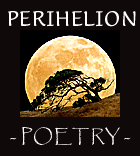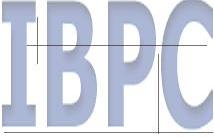Poem of the Year:
May 2010-Apr 2011
Judged by Willard Spiegelman
FIRST PLACE
Best after frost
by Mandy Pannett
The Write Idea
March 2011
Mysterious how the medlar ripens,
softens, rots like Camembert – inexorable
in its breakdown, this progress into mould.
A smutty fruit: Shakespearian – seaside picture-
postcard rude, designed to raise a belly
laugh with hints of bums and holes.
Blettir- the word for overripe, for this slimy,
slurpy process – such an aromatic term, so
French this feel of rainfall in Montmartre.
Rain and footfall; blood-red light: A tale where rain
was far-off drumming; louder, thundering, tumbril
wheels; a ripe and rotten group …
or not of blood but garnet-red: a medlar jelly
sweet for Spring’s return. So suck this flesh and luscious
rot: Best after frost, they say.
This poem is as mysterious, and inevitable, as the pear it takes as a subject. It is rich, sensuous, and of the body. Or, I should say, of the body and the spirit, because the pleasures it relates—eating, slurping, listening, and more—provoke the mind to consider all the relevant literary sources behind it: Shakespeare, Keats, Coleridge, and even Frost himself. The poet takes us in, seducing us with the pleasures of the flesh and then, in a surprise move, thrusts us out of nature, out of hedonism, and into history and pain, echoes of the French Revolution, as one kind of redness replaces another. But the poem then subsides, returning us gently to where we and it had begun, just as spring returns and life resumes. The music of the poem—its delicate internal rhymes and alliterative phrases, its wonderful Keatsian mingling of polysyllabic and then suddenly shocking monosyllabic words—matches the soft yet inexorable process of growth, death, and rebirth. “Suck this flesh” is both an invitation and a warning. We must suspect, as well as savor, the pleasures of the flesh, of fruits and even of our own bodies. We must remain alert to how the body, everything red and ripe and rotten, seduces and betrays. Carnality, like Camembert, progresses into mould. I think of Keats, in “To Autumn”: “to fill all fruit with ripeness to the core.” This poet, like Keats and Shakespeare, knows full well that ripeness at the core is one step away from rottenness, and we must endure them both. –Willard Spiegelman
SECOND PLACE
Motown Layover
by E. Russell Smith
The Write Idea
April 2011
Three time zones east of yesterday,
still I rise early. A pale moon fails.
I find a coffee, walk the vacant streets.
The horizon of an ailing city
rises out of ashes, dark against
a glowing sky of blood and roses.
A carrion crow relieves the owl of
its night watch of my wakeful hours.
High-spirited Sunday sparrows,
starlings, larks and winter finches
forage in the gutters; no other life.
This cruel cold may cauterize
two years of weeping lesions.
I fly before the dirty weather strikes.
The poem gives us a cold, icy feeling of fatigue, of jet lag, of alienation in space and time. It pictures an empty desolate city in the rust belt, visited by a nameless traveler who seems to belong nowhere. It reminds me of the existential bleakness in W.G. Sebald, or in any writer of, or from, eastern Europe, victimized by history and attempting to bear witness to its wounds and horrors. A city is ailing. There is no human presence. Notice that the speaker says that he “find[s] a coffee”: what a wonderful, simple articulation of existential angst. Not “bought coffee at Starbucks,” or anything that would indicate a human transaction. The coffee is found, as if by accident. And whatever hope there might be in the Phoenix-like image of a city rising “out of ashes” is squashed when we realize that only the horizon, nothing else, rises. We find “[n]o other life” but that of the birds, pecking about for sustenance, hoping to find their own equivalent of coffee to sustain them. And what of the speaker’s past? All we know is that there has been suffering, weeping, the lesions and scars to show for sadness. And, then, an escape. Like the birds, our speaker is merely making a layover, coming from and going to where we do not know. The bleakness of internal and external landscapes is partnered by an austere diction and a refusal to mourn, to kvetch, to expand. –Willard Spiegelman
THIRD PLACE
A New Cartography
by Mandy Pannett
The Write Idea
December 2010
It is dark by the river, by this bridge’s
underbelly: struts intertwine, cross-hatch.
He feels insignificant; small: an ant
within a clod of grass.
The bridge is singing a cappella –
voices of women shift in its iron:
a Celtic lament of the lowlands,
drowning, an elegy, death.
He wears a bracelet-like device, for this
is a sentient city. A new cartography
measures his skin, the contours and spikes
of his nerves.
He wonders why the chart of him
should always be so flat: no troughs, no peaks, no
lines of joy – once he stopped to hear a song:
a blackbird in a tree. The graph recorded
gentle frills at this.
Let them keep it all, he thinks, their precious
watchtowers on a wrist. Let them analyse
the heart of man.
The bridge still croons its ballads out, its chords
of broken love. He thinks about the note
he’s left and hopes it hurts her, hopes
she drowns in guilt.
‘Now it’s bound to peak,’ he says.
A pigeon watches at the water’s edge.
The poem offers us a double watching. We are looking at a person who is himself looking out. The poet is giving us a vignette of a life, and of a love, gone wrong. The writer has turned a Country Western song into a poem, which itself is something of a short story that briefly sketches in for the reader the contours of a relationship. The poem is the map of a man, newly released (we infer) from prison, and under constant surveillance for we know not what crime. Its song-like character is heard especially in its changing rhythms, the subtle lilt in the perfect iambic pentameter (“The bridge still croons its ballads out, its chords / of broken love. He thinks about the note”) that subsides as the man’s desire for getting revenge by producing guilt takes his—and the reader’s—breath away. Song, indeed, permeates the poem as much as mapping and measuring: the a capella iron tune of a bridge that includes metaphorical resonances of other songs; the remembered song of a blackbird; the couplet-like ending, with the delicate half-rhyme (“says,” “edge”) and yet another perfect iambic pentameter line that gently reminds us of Wallace Stevens’s casual flocks of pigeons (“Sunday Morning”). Here, it’s a single pigeon, not a group, and Stevens’s visibly “ambiguous undulations” have been replaced by the poem’s own rhythmic variations that undulate in and out of evenness. –Willard Spiegelman

